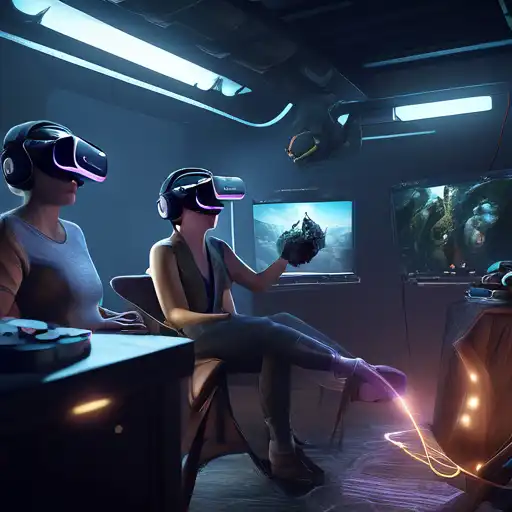Introduction to Virtual Reality Creation
Virtual Reality (VR) has transformed from a futuristic concept into a tangible, immersive experience that captivates users worldwide. Creating engaging VR experiences requires a blend of creativity, technical skill, and an understanding of user psychology. This guide will walk you through the essential steps to craft immersive VR experiences that stand out.
Understanding the Basics of VR
Before diving into development, it's crucial to grasp the fundamentals of VR technology. VR creates a simulated environment that users can interact with in a seemingly real or physical way. This is achieved through specialized hardware like headsets and controllers, combined with software that renders the virtual world.
Designing for Immersion
Immersion is the key to a successful VR experience. To achieve this, focus on creating a detailed and interactive environment. Pay attention to the following elements:
- Visuals: High-quality graphics and realistic textures enhance the sense of presence.
- Audio: Spatial audio cues can significantly deepen immersion.
- Interactivity: Allow users to interact with the environment in meaningful ways.
Choosing the Right Tools
Selecting the appropriate development tools is critical. Popular VR development platforms include Unity and Unreal Engine, both of which offer robust features for creating immersive experiences. Additionally, consider the hardware your target audience will use, as this will influence your design choices.
Testing and Iteration
Testing is an ongoing process in VR development. Gather feedback from users to identify areas for improvement. Iteration based on real user experiences is essential for refining your VR project.
Optimizing for Performance
VR applications demand high performance to maintain immersion. Optimize your project by reducing unnecessary polygons, compressing textures, and implementing efficient coding practices. This ensures a smooth experience across various devices.
Launching Your VR Experience
Once your VR experience is polished, it's time to launch. Consider platforms like Oculus Store or SteamVR to reach a wide audience. Marketing your project effectively is also crucial for its success.
Conclusion
Creating immersive VR experiences is a challenging yet rewarding endeavor. By focusing on immersion, selecting the right tools, and optimizing for performance, you can craft experiences that captivate and engage users. Remember, the key to success lies in continuous testing and iteration.
For more insights into VR development, check out our VR Development Tips article.
